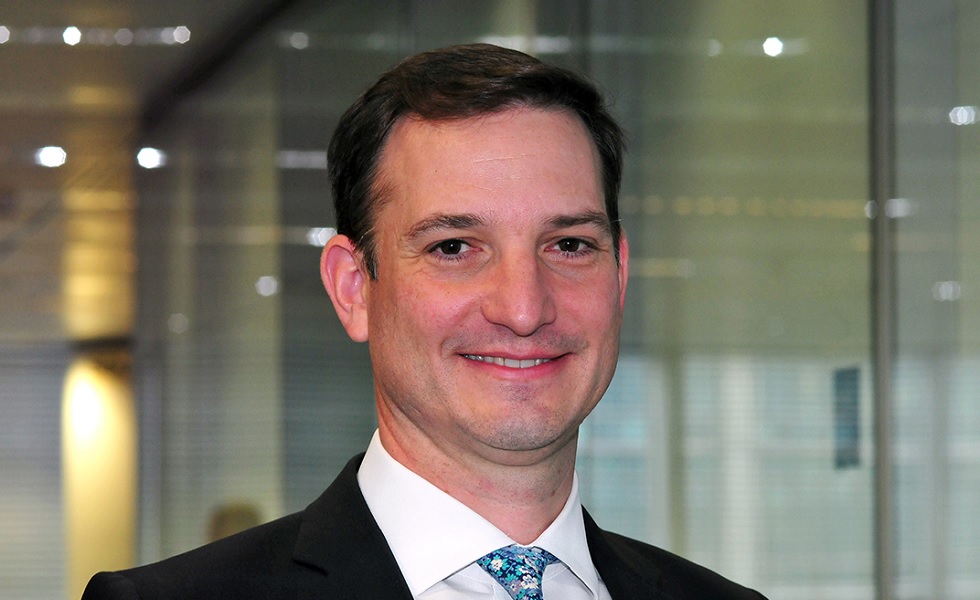HSBC AM: Outlook for emerging market debt corporates

Now that EMD has recovered from most of the post-COVID drawdown, what comes next? With decade-high interest rates, entrenched disinflation, and central bank cuts, we believe we are entering a golden environment for the asset class.
By Bryan Carter, Head of Global Emerging Markets Debt, HSBC Asset Management
Over the past thirty months, investors have enjoyed a welcome rebound in fixed income returns, with emerging market debt asset classes up between 7% and 15% in total return terms.1 A decline in year-over-year inflation both in the US and in emerging markets (EMs), amid a cooling in global economic activity, has allowed the Fed to pause rate hikes and contemplate near-term cuts, giving bonds a respite.
EM bonds are now offering historically high yields, and top-line carry creates an appealing proposition for investors. The yield to maturity on the Corporate Emerging Market Bond Broad Diversified Index (JP Morgan CEMBI BD) has an average yield of about 8.5% year-to-date, the highest in two decades (see Figure 1). The 2022 experience of ‘stress beta’ (where correlations across asset classes increase) has faded into the past. In contrast, the more recent environment has been one of differentiation between currencies, interest rates, and credit spreads, which provides a stability of income and diversification benefit to emerging market debt (EMD) investments. We see underlying duration, the effect of declining interest rates, to power EM returns going forward. A 100 bps decline in 10 year US Treasury yields translates into over 4% capital gain to EM corporates, above and beyond the yield and spread return.

In addition, EM fundamentals are improving, driving EM performance once again, as we see positive trends across growth, inflation, fiscal policy, and governance. A number of EM countries have been upgraded this year, including recently heavyweight Turkey, and several others stand poised to achieve investment grade over the next few years: Azerbaijan, Costa Rica, Dominican Republic, Morocco, Oman, Paraguay, and Serbia to name a few. In fact, the ratio of country upgrades to downgrades has jumped above 1 for the first time in over a decade,2 and this tends to be a long-term cyclical indicator. In other words, we expect the positive ratings migration of the asset class to continue for many years to come. Given the fact that in the US the Fed has been on pause, and globally central banks have come down from ‘peak rates’, it is an enormous relief to the emerging bond asset class.
EMD’s technical underpinnings appear strong. EM corporates’ technical position is supportive as EM has only just begun to experience inflows and we expect more rotations into EM bonds especially from other fixed income asset classes as the rate cut cycle unfolds. A scarcity effect is materializing in EM asset classes. Over the past 30 months, the corporate EM debt markets experienced an unprecedented period of slow issuance, as the rise in interest rates and the attendant credit crunch made it increasingly unattractive for borrowers to refinance or retap the bond markets. The result is that ongoing coupon payments, amortizations, and redemptions are anchoring EM bond valuations and volatility as cash is increasingly reinvested and extended into a dwindling pool of bonds. This may explain the outperformance and lower volatility of EM credit in recent months. Reduced EM primary market (new) issuance can reinforce positive results ahead.
EM bonds are now offering historically high yields, and top-line carry creates an appealing proposition for investors.
For EM corporates, a cycle of deleveraging is paying off with companies being able to draw on cash reserves or credit lines, or delay capital projects, to bridge the high interest rate period. What we may see more of, given the preponderance of legacy low coupon bonds from the QE period, is increased frequency of market tenders to buy back low dollar price bonds and spread-out maturities over a longer repayment horizon. This typically benefits existing bondholders as issuers pay a premium for the transaction.
Taking a longer view, we see that EM corporates have matured into its own asset class. Looking at the market capitalization as represented by the JP Morgan indices, EM corporates were just 25% of the size of the US High Yield asset class 15 years ago but has closed the gap and now stands nearly at the same size today (see Figure 2). Thanks largely to new issuers, many of which are small and medium businesses as well as private companies which represent about half of the total issuer count, the market capitalization has roughly doubled over the past decade. This is healthy growth: issuers are largely prudent and leverage ratios stand roughly 1.5x below their US and EU corporates peers both in investment grade and high yield segments.

In terms of diversification, EM corporates offer something quite distinct. The overlap with companies in the EM equity benchmark is only 29%, and corporates give exposure to over three times as many companies (see Figure 3). What is added on top of the public, listed companies are in many cases more niche companies with strong competitive edge in their geographies and fast growing with private and family ownership. This is a source of return that is unavailable in any other way but via EM corporate bonds.

In summary, from the standpoint of macroeconomic cycles, country fundamentals, bottom-up company strengths, and technicals, EM corporate bonds appear poised to enter a golden period of returns.
1) JP Morgan, Bloomberg, as of 30 June 2024
2) HSBC Asset Management, Moody’s, S&P, Fitch, as of 30 June 2024
|
SUMMARY The peak of Federal Reserve policy and in the global interest rate cycle should prove positive for many issuers. The improvements in governance and in financial conditions are positive for bottom-up investment stories ahead. In terms of fundamentals and technical factors, EM corporates are relatively attractive. |
|
Disclaimer The commentary and analysis presented in this document reflects the opinion of HSBC Asset Management on the markets according to the information available to date. They do not constitute any kind of commitment from HSBC Asset Management. Any forecast, projection or target where provided is indicative only and is not guaranteed in any way. Important information: This commentary has been produced by HSBC Asset Management to provide a high level overview of the recent economic and financial market environment, and is for information purposes only. The views expressed were held at the time of preparation; are subject to change without notice and may not reflect the views expressed in other HSBC Group communications or strategies. This marketing communication does not constitute investment advice or a recommendation to any reader of this content to buy or sell investments nor should it be regarded as investment research. The content has not been prepared in accordance with legal requirements designed to promote the independence of investment research and is not subject to any prohibition on dealing ahead of its dissemination. You should be aware that the value of any investment can go down as well as up and investors may not get back the amount originally invested. Furthermore, any investments in emerging markets are by their nature higher risk and potentially more volatile than those inherent in established markets. Any performance information shown refers to the past and should not be seen as an indication of future returns. You should always consider seeking professional advice when thinking about undertaking any form of investment. Past performance is no guarantee for future returns. The value of the money invested in the fund can increase or decrease and there is no guarantee that all of your invested capital can be redeemed. Future returns will depend, inter alia, on market developments, the fund manager’s skill, the fund’s level risk and subscription, management and redemption costs. |








